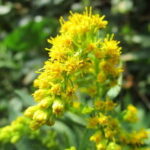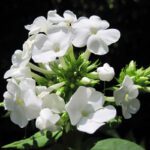Vanilla Orchids
Have you ever wondered what it takes to bring the sophisticated and aristocratic vanilla bean to you? I thought about it many times and figured if I ever had a greenhouse this would be the first plant I’d like to grow, so I wanted to learn more about it and this is what I found out.
Vanilla is a rare orchid that grows freely in hot and humid climates, but it seems that the island of Reunion, the famous home of the Bourbon roses, offers it the best conditions, thus yielding the highest quality of beans. The plant is finicky, like all orchids, and an avid climber. Once it grabs on to a tree (called a tutor) it quickly clambers all the way to the top, making the harvesting of the beans close to impossible. The growers have to walk through the grove and repeatedly pull the eager vines down, back within reach, an effort that the plants are happy to undo as soon as they are left to their own devices.
If that weren’t enough, the vanilla flowers have only a one percent chance to pollinate naturally and all commercial growers pollinate them by hand. This has to happen withinthe 12 hours after the flowers stay open; after that the blooms fade and fall to the ground.
Vanilla farms don’t look like tidy orchards with rows of trees neatly manicured but more like a rare jungle with high grasses and loud screeching tropical birds hiding in the lush foliage of the supporting trees. In this mish-mash of leaves the thick vanilla chords interweave with the rest of the foliage and hide the precious beans amidst the clutter, beans that look so much like leaves you have to be trained to find them.
After the flowers bear fruit the beans grow quickly and are ready for harvest in about three weeks. At this point they are green and thick and not looking like vanilla at all. They are placed in a box to sweat and then taken out into the sunlight for a few hours a day over a couple of weeks; last, they are placed to cure in the shade for another six weeks and then they are finally ready to use.
Vanilla is like good wine, the older the beans the more intense their flavor as long as they are kept in an air tight container. Though the seeds – the vanilla caviar – are considered the source of the delicious aroma the husks’ flavor is just as intense, but because the outer shells are fibrous and almost impossible to chop they have to be scooped out of delicate desserts.
I always wanted to know what it would take to grow vanilla and now I do, so I would like to extend many thanks to vanilla growers all over the world who shared their expertise online.
Photo by Kristy An on Unsplash




 Previous Post
Previous Post Next Post
Next Post




